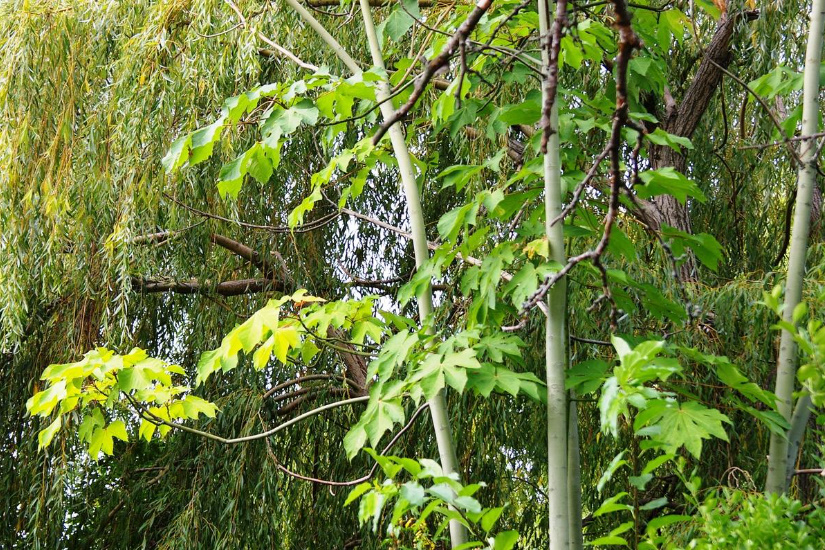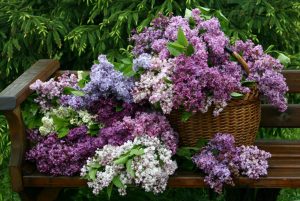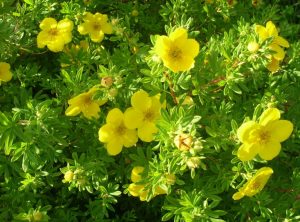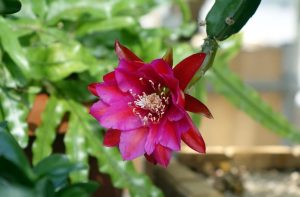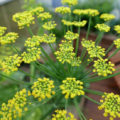The heroine of our article is firmiana, and today she will be accompanied by other exotic trees and shrubs, the green color of the trunks and shoots of which is due to the presence of chlorophyll—bearing tissue in the outer layer of the bark. Let me remind you that such plants are called stem assimilants, mainly woody species from warm places of the globe.
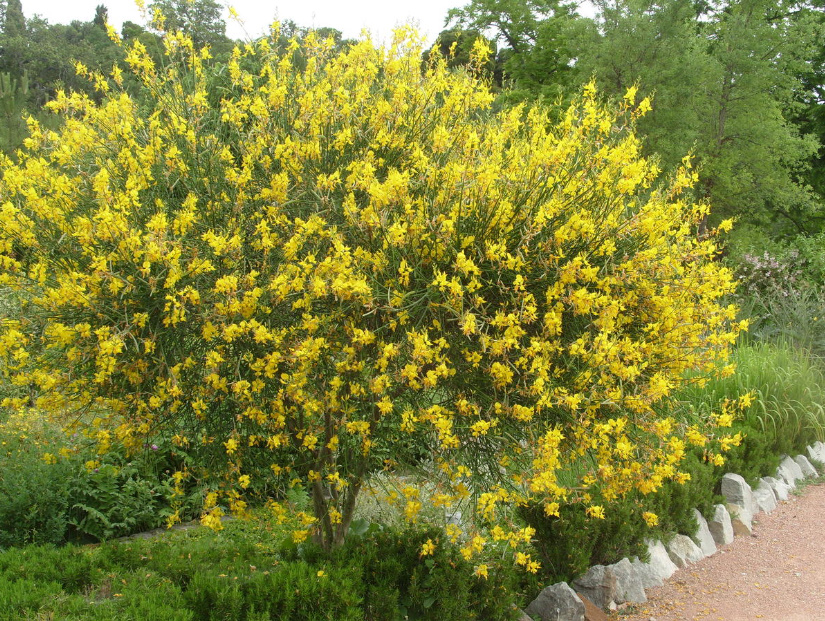
In some Genista, Ephedra shoots also contain chlorophyll. Acer tegmentosum from the Far East grows in the botanical garden.
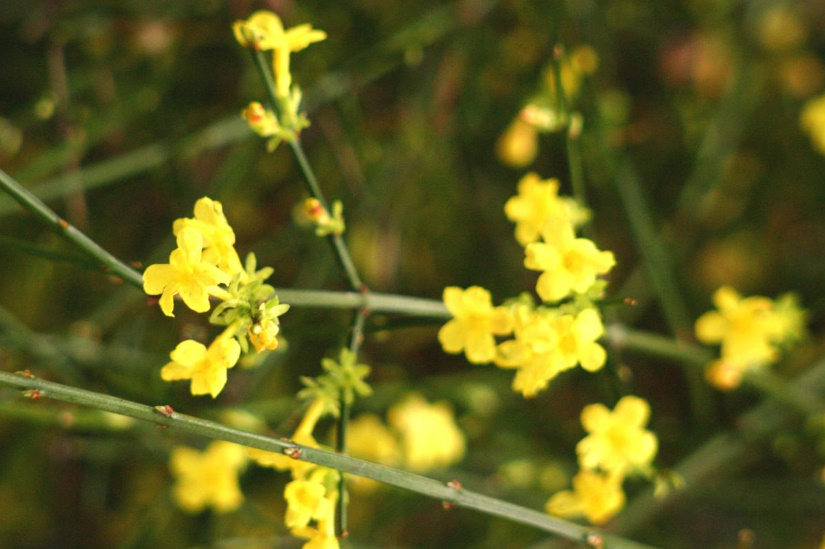
Arbutus andrachne can be considered a temporary stem assimilant. In summer, when it sheds the mature red-cherry bark, the young — green — “works” like a leaf.
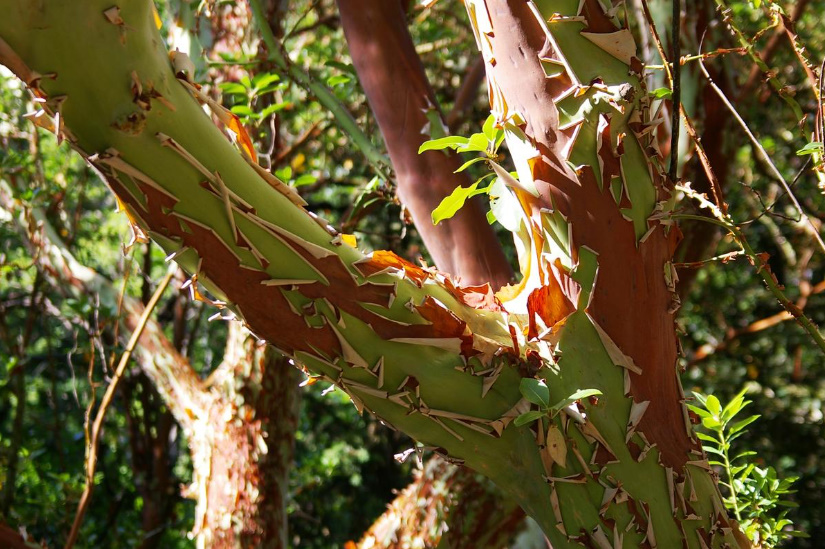
So, meet the only guest of our meeting with incredibly large beautiful leaves — green Firmiana simplex.
Firmiana simplex
Firmiana simplex, Sterculia platanifolia from the Malvaceae family, formerly Sterculiaceae, is a luxurious rare—crown thick—leaf deciduous tree up to 15 m high and up to 10 m wide.
Winter hardiness (according to USDA) — zones 7-10, that is, the critical minimum is from -17.7 ° C to -12.3 ° C.
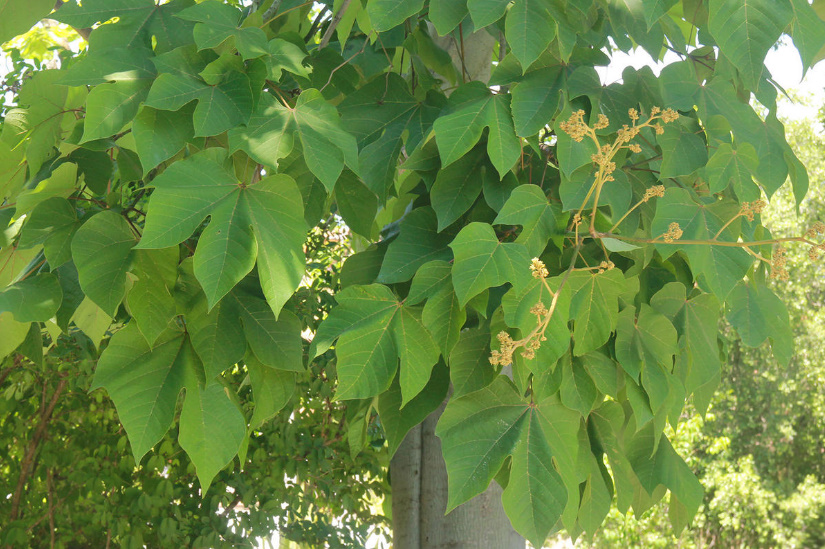
In Firmiana simplex, the bark of not only shoots, but also branches, trunks is smooth, green, photosynthetic. Leaves on long petioles, very large, 25-45 cm long, 3-7-lobed, from pointed-ovate to rounded, with large teeth. The flowers are small, yellowish-green, in large apical panicles 20-30 cm long; they bloom in summer. Fruits are leaflets 3-10 cm long, prefabricated, 5-membered, disintegrating into separate leathery parts (carpels, or mericarps) with spherical grayish-yellowish wrinkled seeds. They contain caffeine and are used at home as a substitute for coffee.
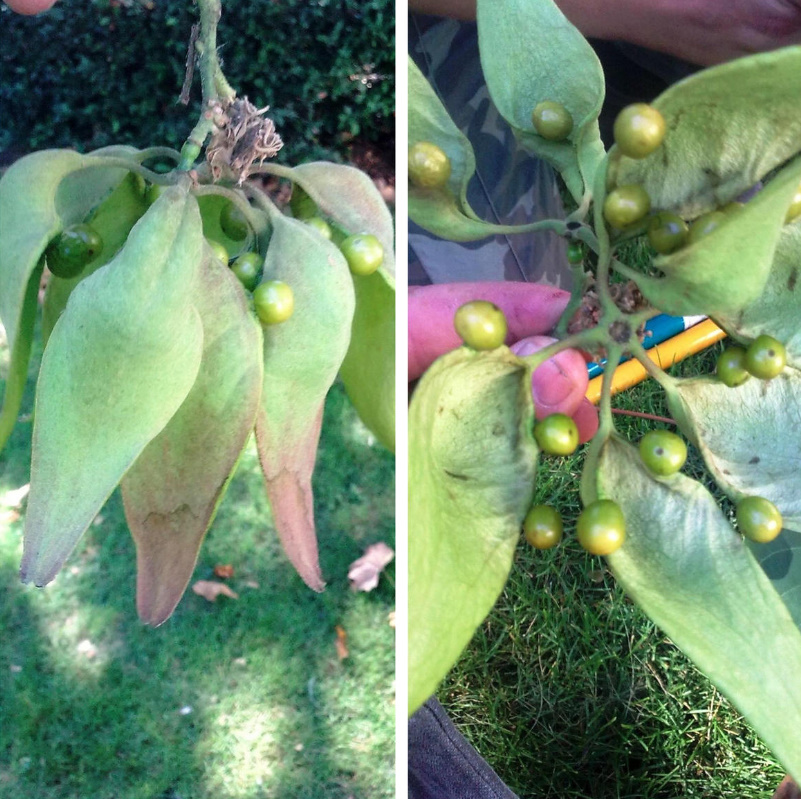
In the USA, it was introduced into culture in 1850 and by now has already managed to naturalize: it blooms, bears fruit, gives self-seeding from Virginia to Florida, Texas, California. It is quite possible that this particular species, unlike others, is more winter-hardy. His homeland is considered to be Eastern China, Japan, Taiwan, Vietnam.
Firmiana simplex first came to the botanical garden in 1814. It grows quickly and develops well on deep, friable, acidic moist (but not waterlogged) soils; thanks to special pruning, they manage to get 25-50 kg of seeds from one adult tree.
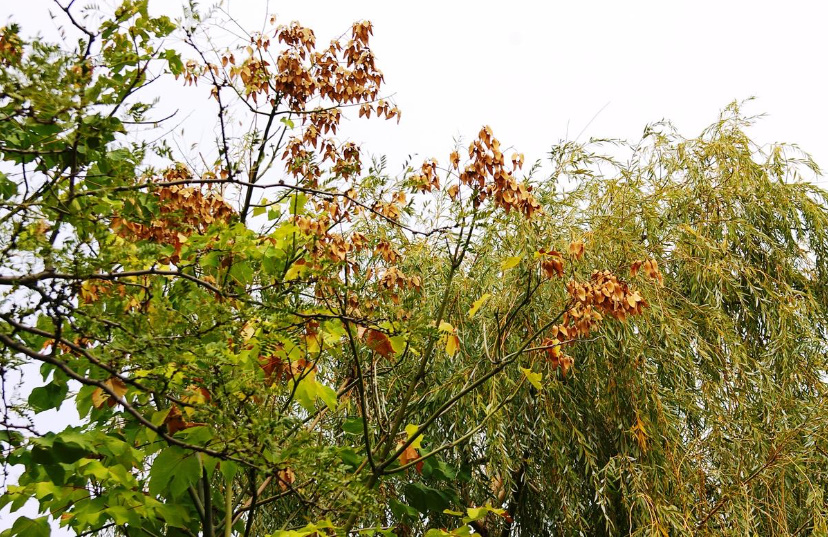
Features of cultivation and reproduction
- When planting seedlings up to 2 m high, the installation of stakes is mandatory, more than 2 m — the installation of stretch marks.
- The blackening of the trunk circle is permissible only for the 6th year after planting, and until that moment the soil is kept in a clean state, constantly loosened, dug up once a year.
- Watering in the first year of planting is regular, from the 2nd to the 5th year – as the soil dries, and from the 6th – only during the dry period.
- The first 5 years after planting at the beginning of the growth of shoots are fed with full mineral fertilizer.
- Gradually clear the trunk of branches to a height of 2-3 m.
- Propagated by seeds: they do not need stratification, germinate well both in autumn and spring crops, but require high substrate moisture. Laboratory germination of seeds — 90%, soil — 70%. In autumn , freshly harvested seeds are sown to a depth of 2-3 cm . The next year, the seedlings reach a height of up to 1 m (on average). With spring sowing by October-November, seedlings reach a height of only 40 cm.
It is important
For true lovers who order seeds and seedlings in online stores, it will be important to know the following:
- there are 16 recognized species in the genus Firmiana, and the rest are either real sterculia (let’s call them that, species without synonyms), or sterculia -Brachychiton;
- Firmiana mainly originate from the tropical regions of Southern China, some species are endemic to it (they grow only in this territory). Their winter hardiness (according to USDA data) is zones 10-11. These are definitely contenders for places in winter gardens and tub culture. Most of them are rare, endangered species: F. bracteata, F. danxiaensis, F. fulgens, F. hainanensis, F. kerri, F. kwangsiensis, F. major, F. minabassae, F. papuana, F. pulcherrima, F. subglabra, F. sumbawaensis;
- F. malayana is thermophilic. Winter hardiness (according to USDA) — zones 10-13;
- when ordering planting material, specify the first (priority) Latin name.
Sterculia
It is impossible to ignore the genus Sterculia from the family Malvaceae (previously it was related to Sterculioideae). There are 91 recognized species, including:
- Sterculia urens. Originally from India. It is found in dry tropical deciduous forests with an average annual temperature of +10…+40°C. It is more thermophilic than Firmiana simplex;
- S. apetala. Winter hardiness (according to USDA) — zone 8;
- S. megistophylla — according to The Plant List, this Latin name is not recognized. Winter hardiness (according to USDA) — zones 10-11;
- S. acerifolia is a synonym, and the priority name is Brachychiton acerifolius. Winter hardiness (according to USDA) — zones 9-10;
- S. foetida. Winter hardiness (according to USDA) — zone 10a;
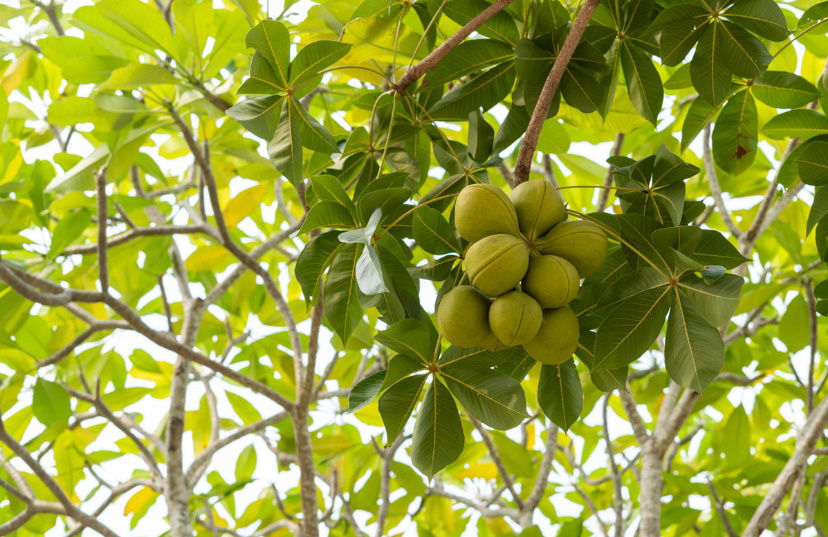
- S. parkinsonii — this name is not accepted for use. When ordering it, anything can be sent to you;
- S. diversifolia — the name is not accepted, Brachychiton populneus — the accepted priority name. Winter hardiness (according to USDA) — zones 8-11.
I wonder if Firmiana simplex is familiar to you? Would you like to have a tree with green bark on your site — or grow it as a tub? Maybe someone knows Sterculia as well?
